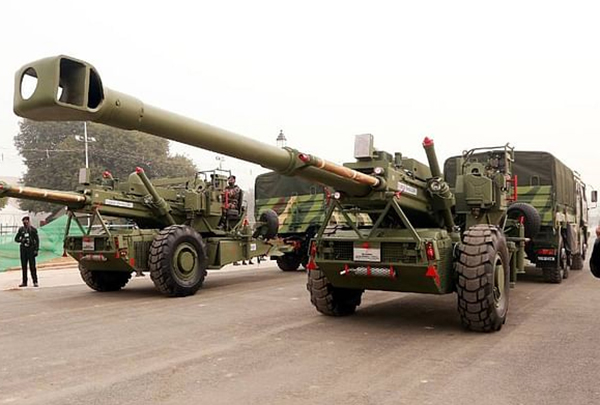India’s much-delayed project for indigenous artillery seems to be finally reaching its conclusion, with the towed howitzer, Dhanush, clearing firing trials and the Advanced Towed Artillery Gun System (ATAGS) set to begin its last round of testing in March 2022.
The Army had, in 2018, placed an initial order for 114 of the 155mm x 45mm Dhanush, manufactured by the Ordnance Factory Board’s Gun Carriage Factory (GCF) in Madhya Pradesh’s Jabalpur — now known as Advanced Weapons and Equipment India (AWE) Limited. However, the delivery was hit by production quality issues flagged by the force and hence needed fresh firing trials before being deployed fully.
Two Dhanush guns, which have a strike range of 38 km, fired 90 rounds each “flawlessly” as part of the second line of firing in Zone 6 at the Pokhran firing range on 8 March. Second line of firing means the firing of guns through ammunition replenishment of 45 rounds each continuously, while zone 6 refers to the highest charge, which makes the gun fire at it its maximum range.
During this process, the barrel gets very hot and may burst and hence the successful firing showed that the gun is now ready for active deployment.
Since April 2019, when the induction of these guns started, only 12 had been delivered — below the 18 guns required to make a full regiment. While the Army is satisfied with the gun in terms of firepower and mobility, it had flagged multiple concerns regarding the production quality.
Under India’s Field Artillery RationalisationProgramme (FARP), finalised in 1999, the Army was supposed to have, by 2025-27, a mix of around 3,000-3,600 155mm but different calibre types of towed, mounted, self-propelled (tracked and wheeled) howitzers.


















